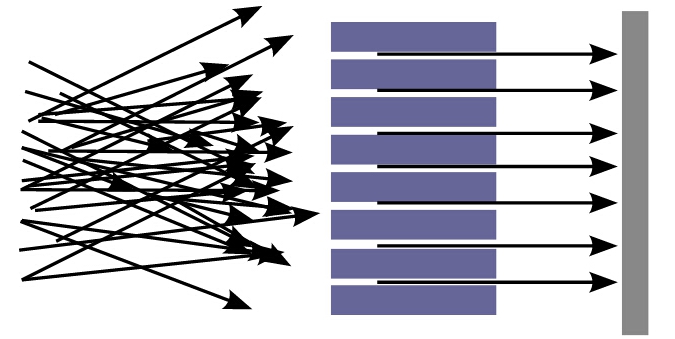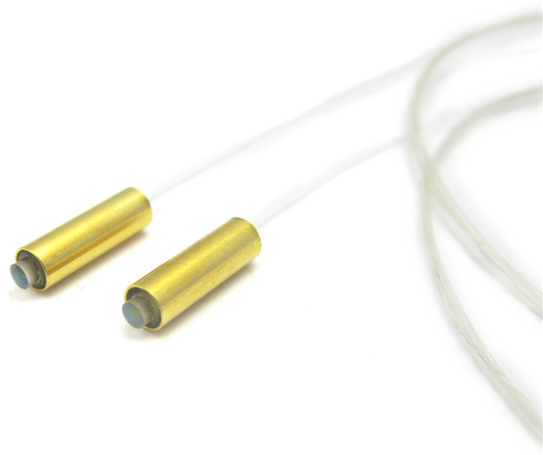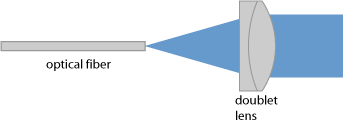Passive optical components are widely used to ensure higher performance of optical networks. There are many kinds of passive optical devices deployed for different applications. Fiber collimator is an important type used for collimating optical light. In this article, we will get to know the basic knowledge of fiber collimator.
What Is Collimated Light?
Before getting to know fiber collimator, we should first understand the meaning of collimated light. Collimated light is the light whose rays are parallel, and therefore will spread minimally as it propagates. A perfectly collimated beam, with no divergence, would not disperse with distance and is sometimes said to be focused at infinity. Hence, a collimated light can travel along the right path to decrease fiber optic loss. However, in actual practice, optical lights may not always transfer in a right direction between different parts, such as from laser diode to fiber, from fiber to planar waveguide, or from micro-optical crystal to fiber, etc. In order to solve the problem, fiber collimator plays an important role in adjusting the light into the desired direction to enable the high performance of fiber optic transmission.

Introduction to Fiber Collimator
A fiber collimator is a device that narrows a beam of particles or waves. It can either cause the directions of light to become more aligned in a specific direction, or cause the spatial cross section of the beam to become smaller. Usually, fiber collimator is required to naturally transform diverging lights from an optical fiber to a parallel beam of light. It consists a single-mode or multimode fiber pigtail and a collimating lens. Collimator can also be used to calibrate other optical devices to check if all elements are aligned on the optical axis.

How Does It Work?
When placing the fiber end on the collimator lens, the light will be aligned to a parallel direction. Then through a slight adjustment of fiber end position, the working distance is obtained. The working distance of fiber collimator is related to the distance between fiber end and lens. According to the actual demands, we can determine the parameters of fiber collimator, such as distance between fiber end and lens, beam radius, accuracy, to achieve better performance.

Lens Types of Fiber Collimator
Nearly all types of lens have been used for fiber collimator. They are the fiber lenses, ball lenses, aspherical lenses, spherical singlets and doublets, GRIN (GRaded INdex) lenses, microscope objectives, cylindrical lenses and so on. Under most circumstances, GRIN lens are widely used because of the low cost and small size. However, when it comes to larger beam diameters, spherical singlet or doublet lenses are more suitable for the application. In addition, lens materials are also different. Glass, plastic and silicon are the common lens materials.
Conclusion
Fiber collimator is an effective passive optical component used for laser beam collimating. This article presents some simple facts about fiber collimator, you can take it as a reference for beginners. Selecting the right type of fiber collimator is essential to the performance of network, you should consider your project requirements as important factors. Moreover, although fiber collimator is a small device, it can still be costly in some situations. Your budget limit should also be taken into consideration. Consulting a professional technician for help is always recommended.
没有评论:
发表评论